Gas Chromatography
Background
In general, chromatography is a term that describes techniques used to separate components of mixtures. In gas chromatography, a gas is used to carry a mixture across a bed of material. Because the gas moves, it is called the mobile phase. The bed of material, on the other hand, is called the stationary phase because (you guessed it) it doesn't move. As the mobile phase carries the mixture across the stationary phase, some of the components of the mixture "stick" to the stationary phase more than others. Therefore, the components travel at different rates across the stationary phase, and exit the stationary phase at different times. The components of the mixture have been separated!
In gas chromatography (GC), the gaseous mobile phase is forced through the stationary phase using pressure. A simple GC would include a tank of gas, pressure and flow regulators to control the gas flow, an oven, an injector to allow injection of a small volume of the sample mixture under pressure, a column containing the bed of stationary phase, a detector to detect the presence of components as they exit the column, and some means to record the detector signal.
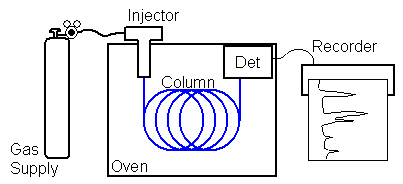
More sophisticated GCs may involve electronic pressure and flow control of the mobile phase, autosamplers with robotic arms capable of injecting many samples unattended, mass spectral detectors capable of identifying components as they exit the column, headspace analyzers, etc.
Gas chromatography is a widely-used technique that has been applied to separating, identifying and quantifying components of complex mixtures across a diverse range of disciplines.
Gas Chromatography Instrumentation
Agilent 6890 GC With a 5973 Mass Spectral Detector
Our Agilent 6890 GC operates under Chemstation software, and is equipped with a Purge & Trap concentrator as well as a 120 sample autosampler. The capillary column in this GC is capable of separating components from very complex mixtures, and the mass spectral (MS) detector helps identify those compounds.
More information regarding this system can be found on our Mass Spectrometry page.
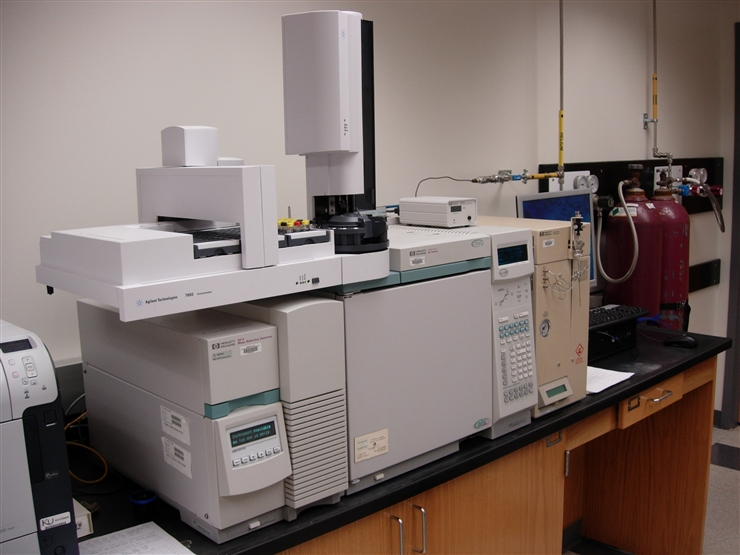
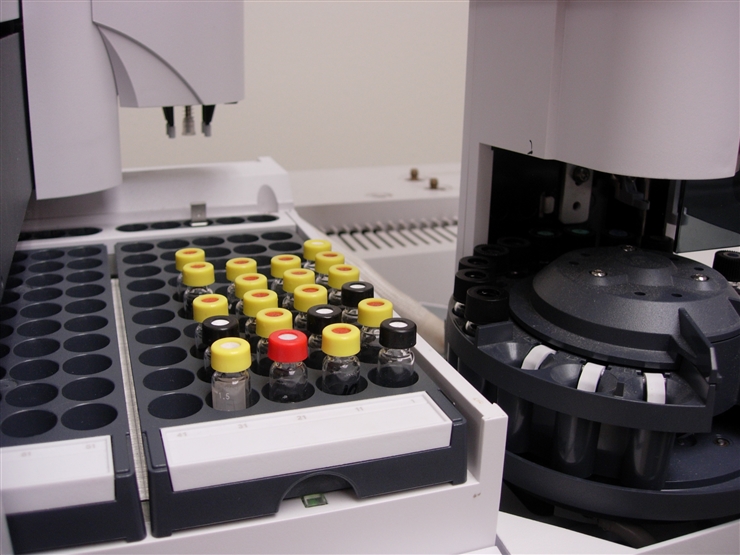
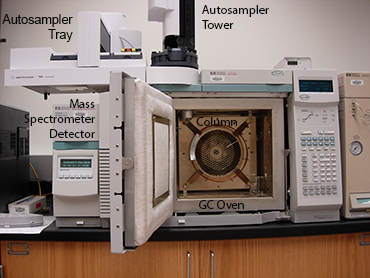
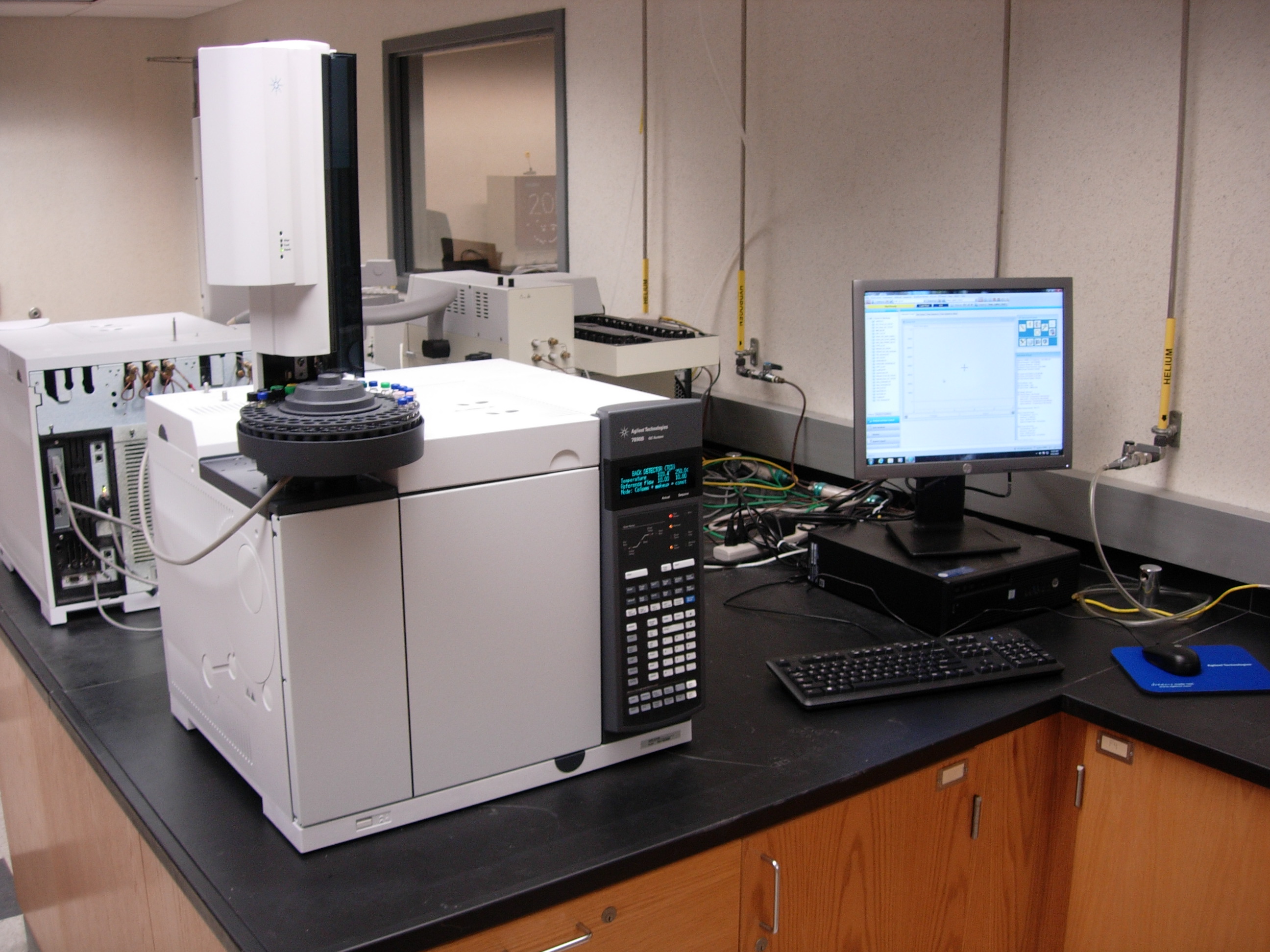
Agilent 7890B Gas Chromatograph
Our new Agilent 7890B gas chromatograph is equipped with an autosampler, dual capillary columns, one flame ionization detector, and one thermal conductivity detector. Students have opportunities to use this gas chromatograph in Organic, Analytical, Environmental Analysis, Physical Chemistry, and Research.
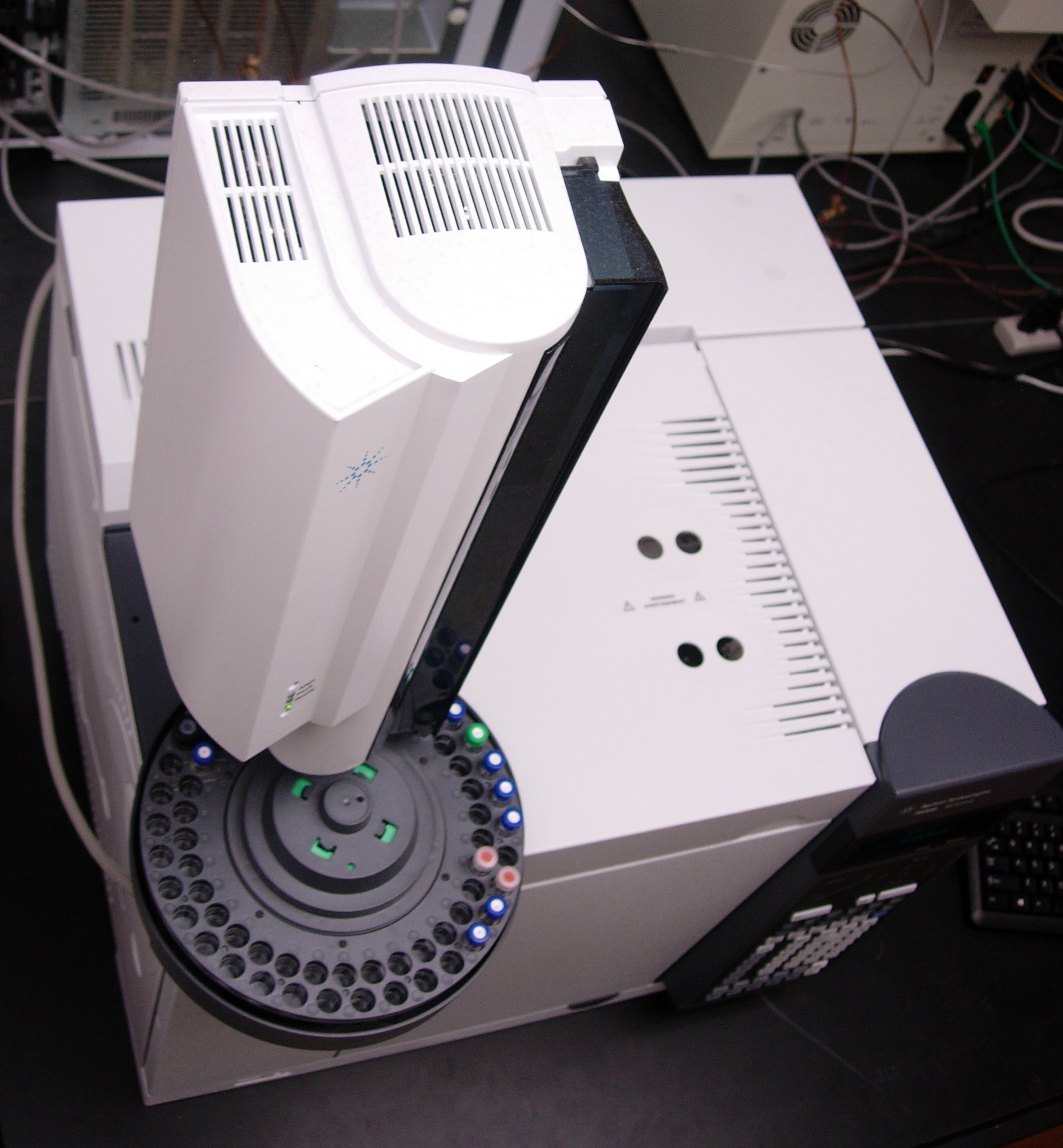
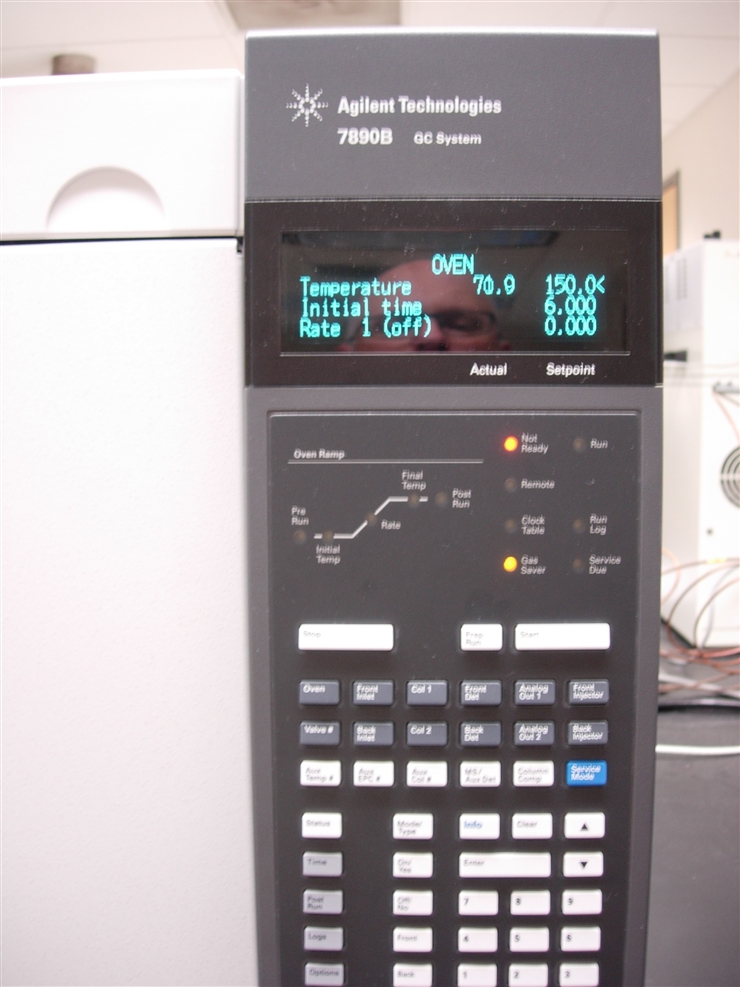
Agilent 7890A Gas Chromatograph with a G1888 Automated Headspace Sampler
This GC is also equipped with an autosampler, dual capillary columns, flame ionization, and thermal conductivity detectors, and also has an automated headspace sampler. The headspace sampler grabs vapor that sits above a liquid sample in a closed container. The headspace sampler is used to determine blood alcohol content, evaluate perfumes and fuels, and determine Henry's Law constants.
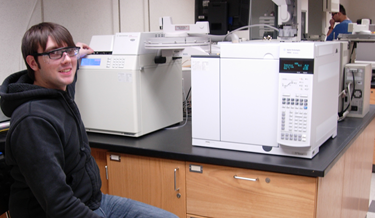
SRI 8610 Gas Chromatographs
Our two SRI 8610's are rudimentary gas chromatographs that use packed columns and thermal conductivity detectors. The simplicity of these instruments allows students to grasp the operating principles of gas chromatography without a lot of automation. However, the data collection software associated with this GC is powerful, and provides all the necessary tools to transfer knowledge of chromatography data analysis to more sophisticated systems.
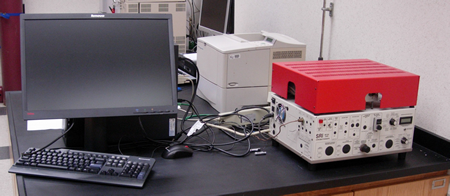
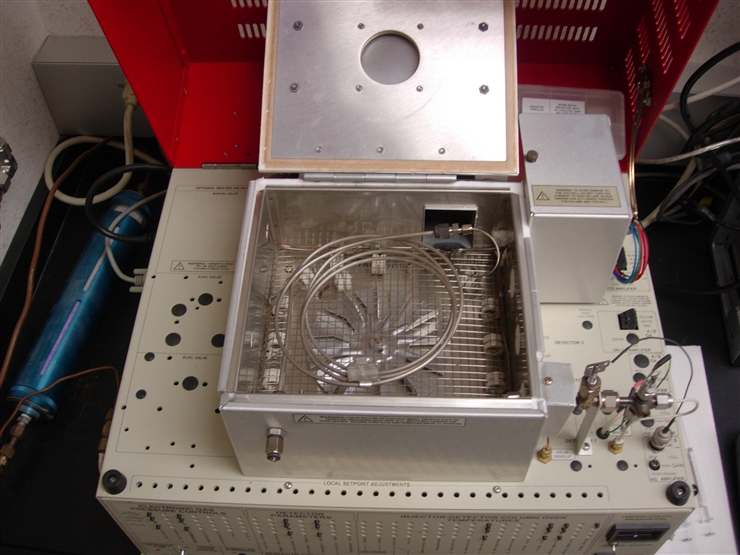
Applications of Gas Chromatography
Gas chromatography is a technique that has an enormous application base. Below is a tiny sample of some examples of GC separations.
Petroleum
Gasoline analysis
Hydrocarbon gas analysis
Fuel and fuel oil analysis
Oxygenated additives in gasoline
Environmental
Determination of pesticides
Detection of disinfection by-products in drinking water
Detection of PCBs (polychlorinated biphenyls)
Underground storage tank leakage
Air pollution constituent analysis
Fast Analysis of Dioxin and Related Compounds
Pharmaceutical
Residual solvents in pharmaceutical formulations
Determination of drugs in racehorse urine
Forensics
Blood alcohol analysis
Determination of illicit drugs
Monitoring drug purity
Determination of drug impurities to track sources
Clandestine lab analysis
Analysis of commonly abused inhalants
Food and Flavor
Perfume analysis
Quality control of alcoholic beverages
Coffee analysis
Fatty acid analysis
Detection of 145 components in rose oil
Volatile compounds in food packaging






